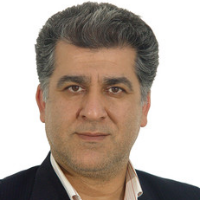Comparison of mineralization of the Sungun and Kighal porphyry copper deposits, NW Iran: with an emphasis on fluid inclusion studies
Author(s):
Article Type:
Research/Original Article (دارای رتبه معتبر)
Abstract:
Introduction
Nowadays, more than half of the word’s copper production is obtained from porphyry copper deposits, large (greater than 100 Mt), low- to moderate-grade, disseminated, stockwork-veinlet, carrying at least trace elements, such as molybdenum, gold, and silver (Sillitoe, 1972). Porphyry Cu systems are related to granitoid porphyry intrusions and adjacent wall rocks and most of them form at convergent plate margins (John et al., 2010). The deposits are often localized within calc-alkaline porphyry magmatic systems in subduction zone settings. Some PCDs have been formed in post-subduction settings. Ahar-Arasbaran metallogenic zone is one of the most productive metallogenic zones in Iran. Mineralization in the area is mainly associated with Tertiary magmatic events. In order to perform a comparative study of mineralization, Sungun and Kighal porphyry copper deposits (PCDs) were selected. The Sungun copper deposit is located in the north Varzaqan and the Kighal copper deposit lies 10 km to the south of the Sungun PCD (Calagari, 2003; Calagari, 2004). As recent studies show there are some similarities between the Sungun and Kighal deposits in terms of the parent intrusions, the host rocks, age and geological setting. However, the grade of copper in the Sungun PCD is 0.62 % Cu and in the Kighal PCD is 0.2 % Cu. Therefore, what are the key factors that have made the Kighal PCD subeconomic?
Material and methods:
Geochemical, fluid inclusion, and mineralogical studies were done on collected samples of the two porphyry copper deposits. In order to mineralogically study the Sungun and Kighal PCDs, 100 thin and polished thin sections were prepared. Eleven doubly polished sections of different quartz veins of the two PCD borehole samples were prepared for fluid inclusion studies. The measurements of 205 fluid inclusions were conducted at the Iranian Mineral Processing Research Center (IMPRC) by ZEISS microscope and Linkam TMH600, at temperature limits of - 196 to +600 °C. The precision was ±0.6 °C at 414 °C (melting point of Cesium nitrate), and ±2°C at -94.3 (melting point of n-Hexane). SPSS 17 and Flincor computer programs (Brown, 1989) were used for data analysis.
Discussion and Results:
In addition to some similarities of parent intrusions and host rocks (Hassanpour, 2010), there are similar fluid inclusion types and even nearly identical salinity and homogenization temperatures in these deposits (Simmonds, 2013). However, some differences in geochemical and mineralogical features, such as different low zonality index, less sulfide minerals and CO2 contents of the Kighal PCD, are notable. Some researchers have pointed out erosion (Hassanpour, 2010) and uplifting (Simmonds, 2013) as the main reasons for the sub-economic nature of the Kighal (non-productivity), comparison of Moho depth in the two deposits shows a greater crustal thickness in the Sungun PCD area (Fig. 10). The thickness of the lower crust is thought to be critical for governing arc mineralization potential, because it leads to an increase of the amount of water, metal, sulfur in adakitic magma forming arc-related bodies that is known to affect the origin of more productive (economic) porphyry copper deposits. Also low-CO2 fluid inclusions of the Kighal can have originated from a CO2-rich fluid immiscibility at depth (Simmonds, 2013). Lack of CO2 can inhibit (delays) bulk volatile saturation and in turn boiling, which influences the efficiency of metal removal from melt as well (Candela, 1997). CO2 contents of mineralizing fluids is important in increasing of pH during boiling event and ore deposition. The nonproductivity of the Kighal PCD may have resulted from all these factors.
Acknowledgement:
This work was supported by Bu-Ali Sina University and Iranian Mines and Mining Industries Development and Renovation Organization (IMIDRO). The authors would like to thank of the Sungun and Ahar copper companies. Special thanks to all the staff for their kind help. Thanks to the reviewers for their suggestions.Keywords:
Language:
Persian
Published:
Journal of Economic Geology, Volume:10 Issue: 2, 2019
Pages:
403 to 424
magiran.com/p1927911
دانلود و مطالعه متن این مقاله با یکی از روشهای زیر امکان پذیر است:
اشتراک شخصی
با عضویت و پرداخت آنلاین حق اشتراک یکساله به مبلغ 1,390,000ريال میتوانید 70 عنوان مطلب دانلود کنید!
اشتراک سازمانی
به کتابخانه دانشگاه یا محل کار خود پیشنهاد کنید تا اشتراک سازمانی این پایگاه را برای دسترسی نامحدود همه کاربران به متن مطالب تهیه نمایند!
توجه!
- حق عضویت دریافتی صرف حمایت از نشریات عضو و نگهداری، تکمیل و توسعه مگیران میشود.
- پرداخت حق اشتراک و دانلود مقالات اجازه بازنشر آن در سایر رسانههای چاپی و دیجیتال را به کاربر نمیدهد.
دسترسی سراسری کاربران دانشگاه پیام نور!
اعضای هیئت علمی و دانشجویان دانشگاه پیام نور در سراسر کشور، در صورت ثبت نام با ایمیل دانشگاهی، تا پایان فروردین ماه 1403 به مقالات سایت دسترسی خواهند داشت!
In order to view content subscription is required
Personal subscription
Subscribe magiran.com for 70 € euros via PayPal and download 70 articles during a year.
Organization subscription
Please contact us to subscribe your university or library for unlimited access!



